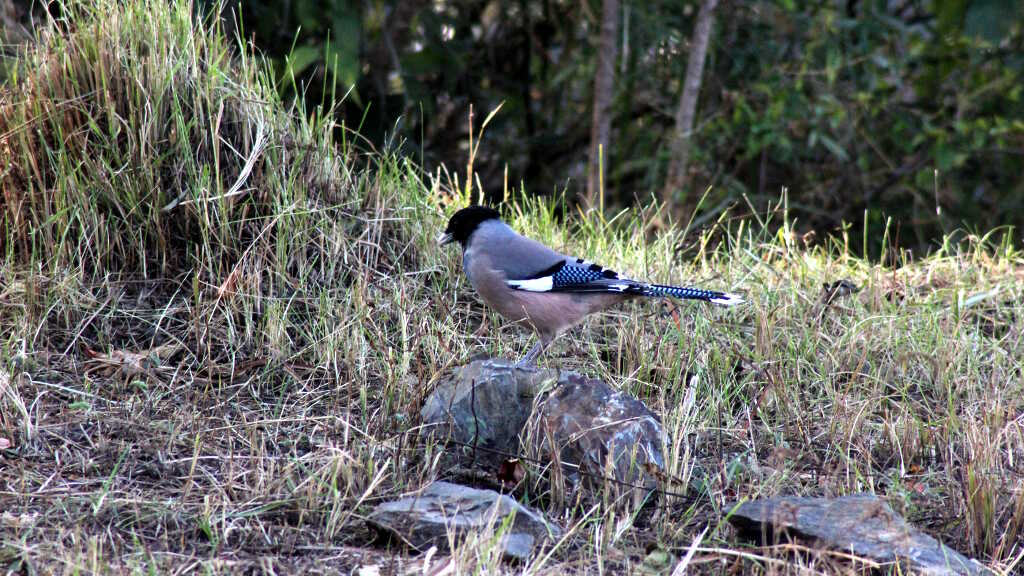
Garrulus lanceolatus (Black-headed Jay)
The Black-headed Jay (Garrulus lanceolatus) is a striking and intelligent bird commonly found in the temperate forests of the Great Himalayan National Park (GHNP). Known for its curious nature and noisy calls, this species adds both color and character to the region’s rich avian diversity.
Physical Characteristics and Behavior
This medium-sized bird is easily recognized by its black head, white throat, and striking blue wings with black barring. The rest of its body is a soft pinkish-brown, creating a stark but beautiful contrast. The Black-headed Jay is known for its loud screeches and mimicking abilities, often copying the calls of other birds or even man-made sounds.
It is highly social and often found foraging in pairs or small groups. Its diet includes insects, seeds, small reptiles, fruits, and even eggs and nestlings of other birds.
Habitat and Distribution in GHNP
Within GHNP, the Black-headed Jay is typically seen in open forests, mixed woodlands, and along forest edges, especially where oak and pine trees dominate. It prefers elevations between 1,500 to 3,000 meters and is often spotted near villages, taking advantage of both natural and human-altered landscapes.
| Common name | Black –headed Jay |
| Scientific name | Garrulus lanceolatus |
| Family | Corvidae |
| Description | Black face and crest, streaked throat, and pinkish –fawn body; blue barring on wings and tail. Resident in Himalayas. (915-2500m) and prefers mixed temperate forest. |
Role in the Ecosystem
The species plays a vital ecological role as both a predator and seed disperser. By preying on insects and small vertebrates, it helps maintain population balance, and through seed dispersal, it supports forest regeneration. The Black-headed Jay also acts as an alarm system in the forest, alerting other wildlife to potential predators.
Conservation Significance
While not currently endangered, the Black-headed Jay depends on healthy forest ecosystems to thrive. Protecting areas like the Great Himalayan National Park ensures the continued survival of this vocal and vigilant forest dweller.
Conclusion
The Black-headed Jay (Garrulus lanceolatus) is more than a vibrant bird in the canopy—it’s a vital part of the forest ecosystem in the Great Himalayan National Park. Its intelligence, adaptability, and ecological contributions make it an important species for both bird enthusiasts and conservationists. Observing this bird in its natural habitat offers a deeper appreciation for the complexity and beauty of GHNP’s avian life.



